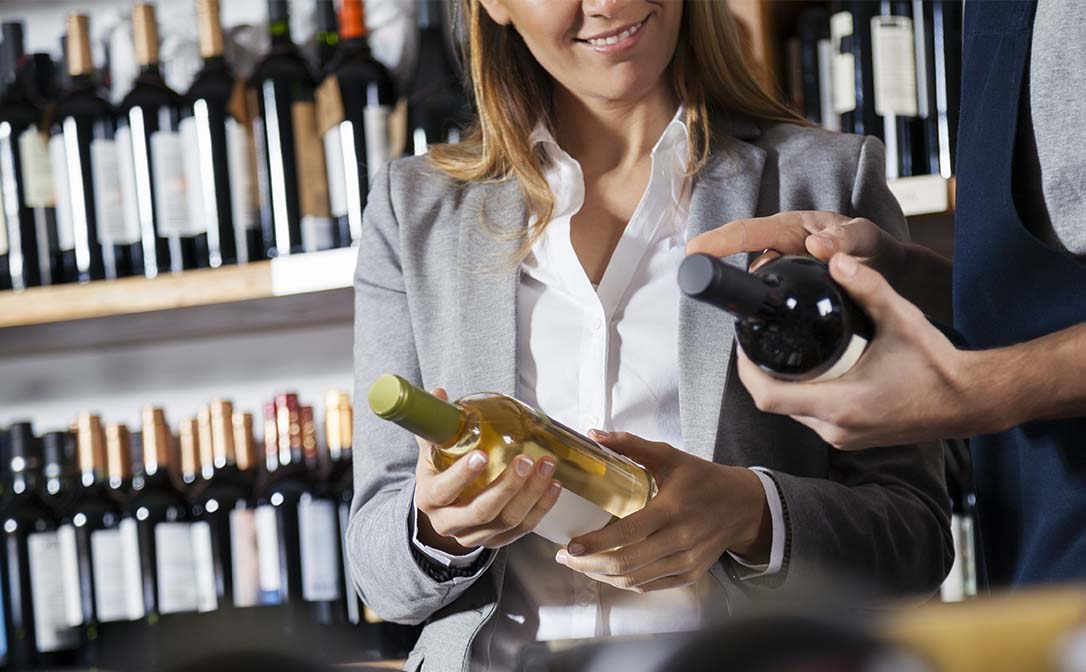This two-part guide is your handy manual to reading wine labels from anywhere in the world. We’ll show you how to use the information presented on the bottle to predict how a wine will taste.
Wordy wine labels can seem very confusing, but there’s a code to crack. Wine label design is used throughout the world to communicate key information about the wine to you, the customer.
Once you know what information to look for, you’ll be able to decipher almost any label, no matter how complex. In part one of this guide, we’ll look at the most common features of a wine label.
Brand/producer name
This often features prominently on the label. A recognisable household brand provides a point of familiarity for buyers, while an iconic producer usually demands a higher price point due to their prestige.
Wine name
The wine’s name differentiates it from other bottles within the producer’s range. Many producers simply use the region of origin or the grape variety. Other producers opt for something more unique to help tell their story. Wines named after local historical figures, specific vineyards or even family members are also common.
Geographical Indication (GI)
Wine labels will very commonly indicate where the grapes used to make the wine have been grown – this is known as a Geographical Indication or a GI. In the European Union, GIs come with regulations which dictate not only where the grapes come from but might also stipulate what varieties can be used and/or how the wine should be made.
Factors such as climate in a specific GI will have an effect on how ripe the grapes get, which will, in turn, influence the style of the wine. If you learn a little wine geography, you’ll be able to work out what to expect in terms of grape varieties and regional climate – information which will really help you to predict what the wine will taste like.
Grape variety
The grape variety is perhaps the most important factor affecting what the wine will taste like. Each variety lends specific characters to the wine and an increasing number of them are now world famous. Many people actively seek out ‘Malbec’ on a wine label when they’re looking for a full-bodied red with intense dark fruit flavours, or ‘Sauvignon Blanc’ if they’re after a dry and refreshing white wine.
Note that the grape variety is not always stated on the label. In many parts of Europe, it is the region rather than the grape that appears. They leave it up to you to learn what varieties are commonly used in that region.

Vintage
Most wines display a vintage on the label. This is the year when the grapes were harvested. The vintage is important for two reasons:
The age of the wine
Some very good or outstanding quality wines will benefit from bottle ageing, gaining new and interesting flavours over time, but most wines should be drunk when they are young and fresh. The vintage helps you decide whether the wine is too young, too old, or just right for drinking.
The quality of the vintage
In some regions, such as Bordeaux in France, weather is very variable from one year to the next. Weather affects the health and ripeness of the grapes and has an important impact on the style and quality of a wine. Some producers will not make a wine in poor vintages. Some vintages fetch higher prices than others due to the quality or rarity of the resulting wines.
abv
The wine legally must display its alcohol by volume (abv) somewhere on the bottle – often on the back label rather than the front. Most dry light wines sit between 11-15%. Wines over 15% are usually fortified wines (meaning extra alcohol has been added to them), while wines under 11% are likely to have some sweetness as a result of unfermented sugars.
Other terms
There are many other terms that producers may use to tell you a little more about their wine. Some of these have legal definitions while others don’t. A WSET wine course will teach you many different labelling terms - here are a few of the most common to get you started:
Demi-sec: a French term meaning ‘half dry’ – expect the wine to have some sugar sweetness.
‘Vieilles vignes’/ old vines: older vines typically produce smaller numbers of more concentrated grapes, which can produce more intensely flavoured wines.
Barrel fermented/aged: this indicates that the wine has been made in contact with an oak barrel. Contact with newly coopered oak barrels tends to lend flavours of spice and smoke to a wine.
Now you know some of the most common features of a wine label, you can start to make sense of the different styles available.
To make this information truly useful, you need to piece together the various clues to predict what the wine will taste like, and whether you are likely to enjoy it.
In part two, we’ll put this theory into practice by looking at two wine labels in detail.


